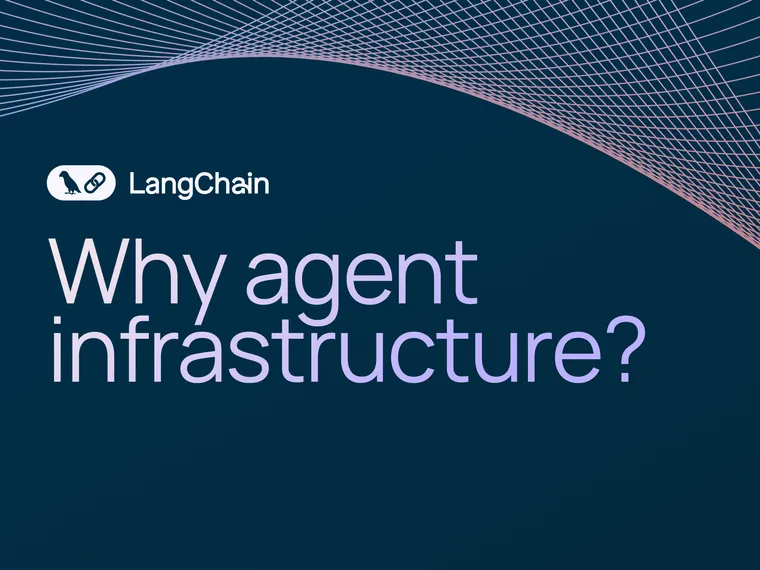Over the past year, we’ve seen the rise of agentic applications, from workflow copilots to codegen assistants to deep researchers. These agentic apps often combine tool use, memory, and reasoning to complete complex, multi-step tasks — moving beyond retrieval and chat to action-taking.
Agents are altering how we think of applications. Apps are no longer just a series of requests and responses — reduced to input forms, buttons, visuals, or chat interfaces. Instead, agents remember, reason, and act. They work in the background off of events and information. They not only act but also ask for help, show their work, reason through problems, and collaborate in groups. And while stateless, serverless compute remains a north star for distributed systems, it falls short for agent-based applications. This new style of application requires new infrastructure.
Agents often are:
- Long-running — reasoning and executing on a task for minutes, not milliseconds.
- Stateful — carrying memory and persisting context across steps or from past interactions
- Bursty — especially in scheduled or user-triggered scenarios.
Trying to shoehorn an agent with these characteristics into existing serverless or microservice architectures often leads to brittle, fault-prone systems.
Why agent infrastructure is needed
Agentic workloads demand new primitives — ones that neither web backends nor traditional distributed systems provide. A new layer to the agent stack is emerging: agent infrastructure. It sits between your agent logic and raw compute, providing structure, control, and reliability.
Agent infrastructure is infrastructure purpose-built to support durable execution, complex state management, human-in-the-loop coordination, streaming and more — without requiring you to stitch everything together yourself. That's why we built LangGraph Platform to be the best place to deploy and run your LangGraph applications with scalable, reliable agent infrastructure.
Durable execution: Agent runs take time
Most serverless environments are optimized for short-lived tasks. But agents — from research assistants to workflow copilots — can run for at least several seconds, and often minutes, or even hours in extremes. They might pause to call tools, wait on APIs, or receive human-in-the-loop feedback.
In LangGraph, these agents are suspended and safely resumed later, but many systems can’t handle these long or unpredictable pauses. Without the right runtime, long-running agents risk timing out, crashing, or losing progress.
Agent infrastructure provides:
- Background execution so agents can run independently of the initial request
- Heartbeat signals to prevent timeouts by signaling ongoing progress
- Resumable runs to restore from checkpoints after crashes or pauses
This durability is essential for building reliable, production-grade agents that work through to successful completion of the task no matter how long it takes.
State management: Agents need more than message buffers
An agent’s “state” can include intermediate results, tool outputs, embedded documents, or multi-turn context. Traditional infra doesn't give you a structured way to store, resume, or edit this state mid-run. An agent infrastructure can provide the storage and checkpointing needed OOTB to persist state across steps, failures, or user interventions.
Human-in-the-loop: Agents need to wait, pause, and resume
Agents frequently rely on human feedback for approval or clarification before continuing. That means you can’t just fire off a request and forget it. You need resumable state and support for arbitrarily long delays between steps.
Agent infrastructure lets you use APIs to pause or resume without wiring together queues, caches, and polling endpoints manually.
Bursty concurrency: Agents must absorb spikes in traffic
Real-world agentic apps can face unpredictable surges — whether it’s millions of users querying an AI search app at once, or a scheduled deep research assistant running its end-of-the-day job for entire teams. These spikes can lead to request traffic jams, dropped requests, or degraded performance.
An agent infrastructure like LangGraph Platform is designed to absorb these bursts with:
- Task queues, which buffer and schedule incoming runs effectively (even under heavy load)
- Horizontal auto-scaling, where new workers and queue instances can be added dynamically to ensure each run is processed just once
This thus eliminates the need for custom load balancing logic and helps your agent remain stable even under high-throughput or unpredictable workloads.
Streaming: See what your agents are thinking
Agents don’t just return a final result — they think, act, and refine their response over time.
Good agent infrastructure makes their intermediate output (e.g. thoughts, tool calls, partial completions) visible to enhance user experience and developer visibility. For example, LangGraph Platform enables:
- Token-level streaming, which lets you stream LLM output token-by-token from any node, subgraph, tool, or task in LangGraph.
- Custom data streaming, which emits structured, user-defined data at any point in the graph using custom stream mode, enabling flexible communication beyond standard text responses
- Streaming generative UI, which renders dynamic components for rich user interfaces.
Since all streaming modes contain metadata context, you can trace every output back to its origin — making it easier to debug and monitor your agent behavior too.
How LangGraph Platform helps
LangGraph Platform gives you the infrastructure needed to run agentic workloads in production without building it yourself. You can deploy agents directly from GitHub with 1-click, and the runtime handles long-running execution, checkpointing, retries, memory, streaming, and traffic spikes out-of-the-box.
If you’re building agents that are stateful, action taking, or need to pause and resume — LangGraph Platform takes care of the hard parts so you can focus on agent logic and behavior, not infrastructure. See the docs to learn more.
The future is agentic — so build on a solid foundation
Agentic apps are here to stay. But like every shift in software — whether from monoliths to microservices, or from on-prem to cloud— the transition requires new tools.
Agent infrastructure is the missing layer. And if you're building anything beyond a stateless prompt, it's time to think seriously about what supports your agents behind the scenes.
Get started with LangGraph Platform to learn more.

